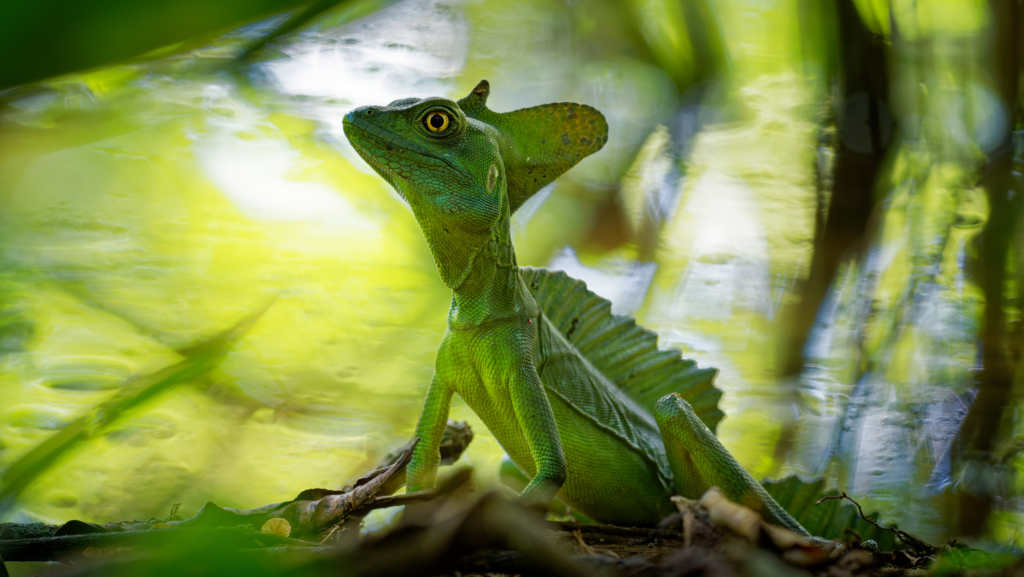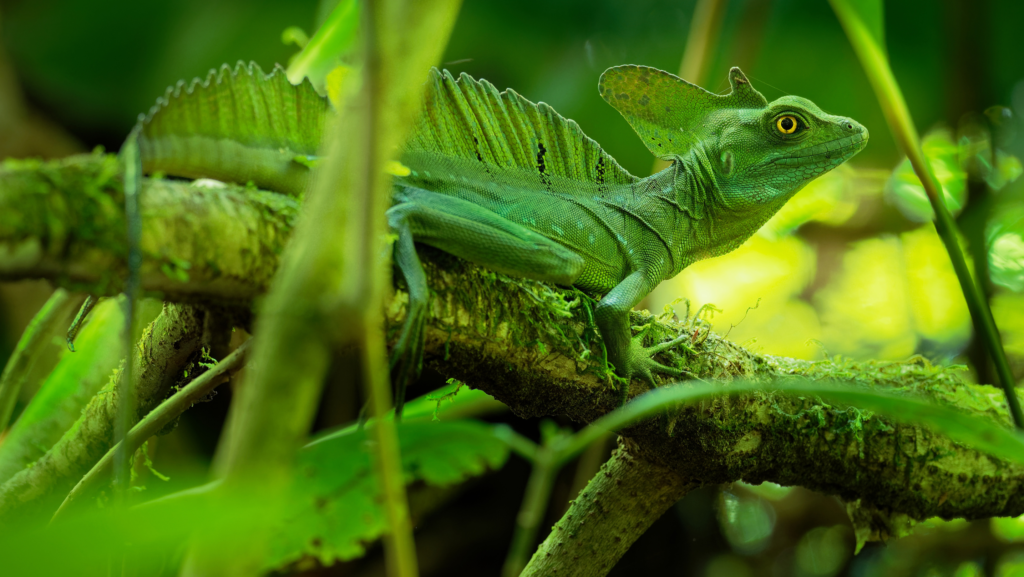Basilisk Lizard: A Life Story
Birth:

The story of the basilisk lizard begins with the hatching of its eggs. Female basilisks meticulously select a suitable site for nesting, often choosing sandy areas near water sources. They lay clutches of eggs in concealed nests, and after an incubation period, usually lasting a few weeks, the tiny basilisk hatchlings emerge. At birth, these small lizards are equipped with the instincts necessary for survival, and their journey through life begins.
Growing Up:

As hatchlings, basilisk lizards are vulnerable to predators, and their early days are spent navigating a world filled with potential threats. Their growth is rapid, and they undergo a series of molts to accommodate their increasing size. Young Basilisks often spend a significant amount of time near water, honing their unique skill—sprinting on water surfaces, earning them the nickname “Jesus Lizards.”
Life:
The life of a Basilisk Lizard revolves around the availability of water. They are commonly found near streams, rivers, and ponds, where they can escape terrestrial predators by fleeing across the water’s surface. Basilisks are diurnal creatures, active during the day, and they utilize their keen eyesight to detect both prey and potential threats. Their diet consists of insects, spiders, small vertebrates, and occasionally, plant matter.
Food:
Basilisk Lizards are opportunistic hunters. They use their excellent vision to spot prey, which they capture with a swift strike of their long, sticky tongues. Insects, spiders, and small invertebrates make up the majority of their diet, providing the necessary nutrients for their continued growth and survival.
Reproductive:

Upon reaching sexual maturity, which typically occurs within the first year or two of life, basilisk lizards engage in courtship rituals. Males often display vibrant colors and engage in territorial behaviors to attract females. After successful courtship, females lay clutches of eggs in soil or sand, and the cycle of life begins anew. The reproductive success of basilisk lizards is closely tied to the availability of suitable nesting sites and the health of their habitat.
Death:
The lifespan of a Basilisk Lizard in the wild is influenced by various factors, including predation, environmental conditions, and the availability of resources. Common predators include birds, snakes, and larger mammals. Additionally, environmental changes, habitat destruction, or competition for resources can impact their survival. While some Basilisk Lizards may fall prey to predators, others succumb to natural elements or diseases.
In the grand tapestry of life, Basilisk Lizards play a unique and vital role in their ecosystems. Their ability to run on water, agile hunting skills, and reproductive strategies contribute to the intricate balance of nature, ensuring the continuation of their species for generations to come.

